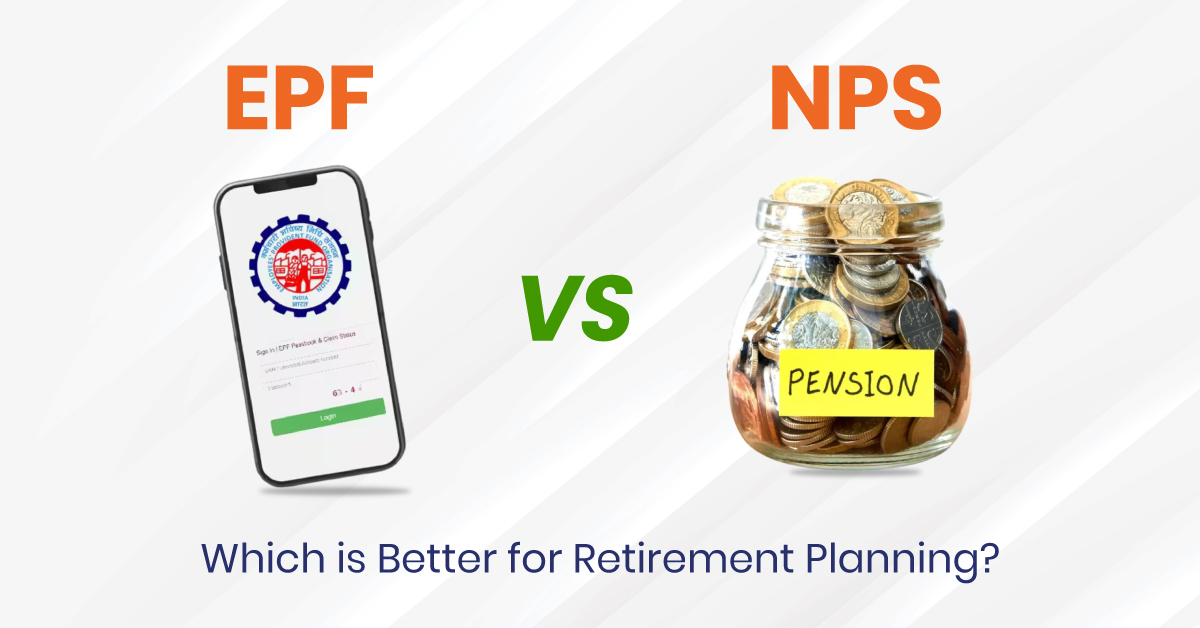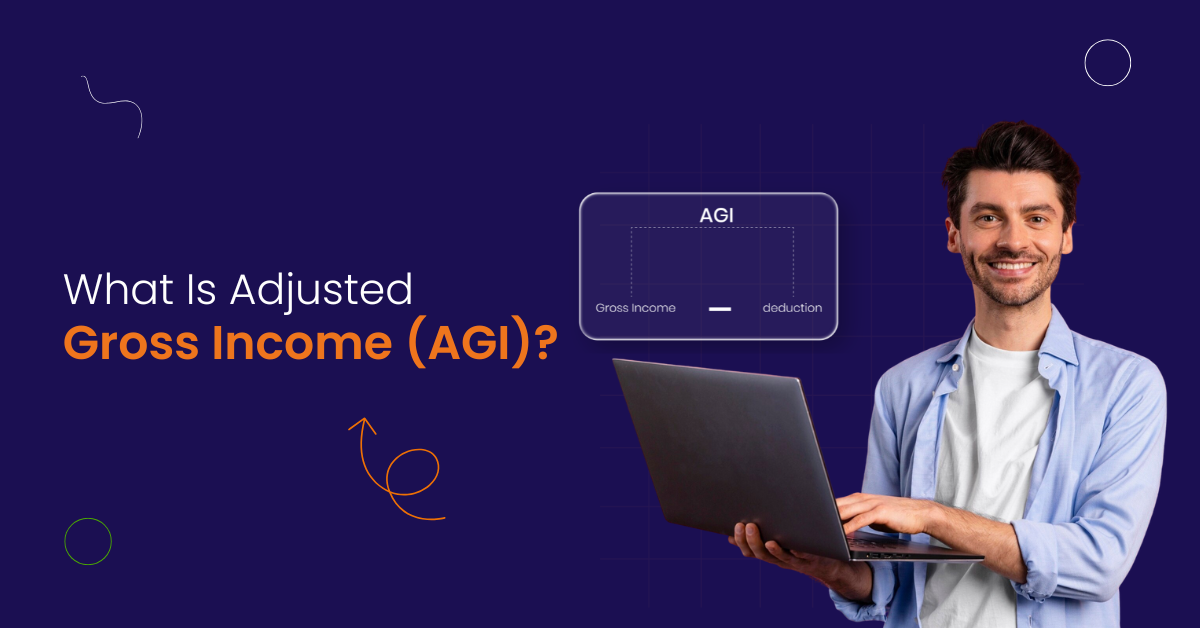Having the right tools to protect and grow your money results in a secure future. For working professionals in India, two well-known retirement options are – Employees Provident Fund (EPF) and the National Pension System (NPS).
Both are popular. And both offer tax benefits. But they’re built differently and may suit different sets of people altogether.
So, this guide breaks it all down, comparing EPF vs NPS, including returns, flexibility, fund access, risk, and long-term outcomes. Let’s analyse not just the numbers but the strategy behind them.
What is EPF and How Does It Work?
The Employees Provident Fund (EPF) is a “compulsory” savings plan designed for salaried employees. Both you and your employer contribute 12% of your basic salary into your EPF account. Over time, this grows with interest and becomes a significant lump sum amount you can access at retirement.
Key highlights of EPF and pension scheme:
- Mandatory contributions for salaried employees
- Fixed interest, typically around 8–8.5% per annum
- Interest is tax-free after five years of continuous service
- Withdrawals are allowed under special conditions, like home purchase, medical emergencies, or education
- Contributions qualify for tax deductions under Section 80C
This makes EPF one of the most reliable ways to create a guaranteed fund for the future after retirement. The EPF returns are protected funds, which makes it an attractive choice for conservative investors for assured post-retirement income.
What is NPS and Why It Matters?
The National Pension System (NPS) is a voluntary retirement plan available to all Indian citizens. Unlike EPF, NPS is market-linked, which means your returns are not fixed. But that’s not necessarily a downside. Over the years, the interest rate on NPS has hovered between 9% and 11%, often higher than EPF.
Here’s what makes NPS appealing:
- Open to salaried, self-employed, and government employees
- Investments spread across equity, corporate debt, and government bonds
- Professional fund management under PFRDA regulation
- Allows contributions to be made at your chosen frequency
- Extra deduction of Rs. 50,000 under Section 80CCD(1B)
- 60% of the corpus is tax-free at retirement. The rest amount must go into an annuity
This mix of flexibility and potential growth offers a good fund balance with a longer investment horizon or a higher risk tolerance.
Key Differences Between EPF and NPS
The two systems are built on entirely different foundations: one on guarantees, the other on possibilities. So, understanding the difference between EPF and PF is very important for investing.
| Feature | EPF | NPS |
|---|---|---|
| Type | Mandatory for salaried employees | Voluntary for all citizens |
| Returns | Fixed, government-set | Market-linked |
| Risk Level | Low | Medium to High |
| Tax Benefits | Section 80C | Section 80C + 80CCD(1B) |
| Withdrawal | Lump sum at retirement | 60% lump sum + 40% annuity |
| Management | EPFO | PFRDA-regulated fund managers |
People searching for the difference between a pension fund and a provident fund usually want to know where they’ll have more control, more liquidity, and more growth. This is where pf and EPF, or even the difference between provident fund and pension, becomes a key decision factor.
Who Should Choose EPF?
EPF works best for:
- Individuals with a lower risk appetite
- Employees in the organized sector with regular income
- People seeking stable, guaranteed returns
- Taxpayers who want safe deductions under Section 80C
- Employees planning to withdraw early for milestones like home purchase or education
It offers more control over your funds for both the short term and long term. NPS ensures a predictable amount at the end of your career.
Who Should Consider NPS?
The National Pension System is built for those willing to take a long-term view. Its structure rewards consistency, patience, and smart asset allocation.
You may lean toward NPS if you:
- Are in your 20s, 30s, or early 40s and have time to let market-linked assets grow
- Can tolerate moderate risk in exchange for higher returns
- Want to invest beyond EPF and claim additional tax benefits
- Prefer to allocate investments across equity, debt, and government securities
- Wish to receive regular post-retirement income through annuities
For professionals comparing EPF vs PF or exploring the difference between Provident Fund and pension, NPS opens up wider financial planning options. Unlike EPF’s uniform contribution, NPS gives you room to define how much, how often, and where your funds grow.
And the results speak: historical interest rate on NPS averages around 9–11%, often exceeding traditional savings methods.
EPF and NPS Together: Why Many Opt for Both
Contrary to popular belief, you don’t have to choose only one. Using both EPF and NPS in tandem can help you strike a healthy balance between security and growth.
Here’s why combining both matters:
- EPF delivers stability with its fixed interest rate
- NPS adds growth through exposure to equity and long-term bonds
- Dual contributions allow diversification across debt and market instruments
- You maximize your tax deductions, Rs. 1.5 lakh under Section 80C for EPF,
- plus Rs. 50,000 extra under 80CCD(1B) with NPS
- At retirement, you get both a lump sum and a regular income stream
For those debating the difference between pension and provident fund, this dual-approach lets you benefit from both models, one that accumulates and pays at once (EPF), and another that builds and sustains income over time (NPS).
Fund Access: NPS vs EPF
Liquidity and fund access are often the make-or-break point when comparing these two.
1. EPF Access:
- Withdrawals permitted before retirement for specific life events (home loan
- repayment, child’s education, medical emergencies, marriage)
- No penalties for qualifying partial withdrawals after 5 years
- The entire balance can be withdrawn after retirement
2. NPS Access:
- Withdrawals are allowed only under strict conditions (marriage, education, house, or illness)
- At retirement, only 60% of the total corpus is tax-free
- The remaining 40% must be used to purchase an annuity
This difference can matter when someone’s comparing EPF and PF difference or weighing whether to prioritize flexibility or long-term locked growth.
Risk Appetite: EPF for Stability, NPS for Growth
Your choice may depend less on returns and more on how you handle market fluctuations.
1. EPF:
- Risk is near-zero
- Returns are predictable, government-backed
- Ideal for individuals who value capital protection
2. NPS:
- Linked to equity and bond performance
- Returns are higher, but depend on market behavior
- Suitable for those with a higher risk tolerance
That’s why questions around the difference between EPF and PF or EPS vs NPS often come down to mindset. Are you looking to protect every rupee, or are you okay with ups and downs for better overall growth?
Investment Horizon: How Long Are You Willing to Wait?
NPS is built for the long haul. EPF works better for shorter-to-medium financial goals.
- If you plan to retire in 10–15 years, EPF could be more suitable
- For younger professionals targeting 25+ years, NPS allows compounding to do its job
Your investment horizon also affects the kind of withdrawals, taxation, and cash flow you can expect post-retirement. When comparing the difference between PF and EPF, or the difference between EPF and PF, the time you intend to stay invested plays a critical role.
Tip: Always match your retirement product with your expected retirement lifestyle. If you anticipate high monthly expenses, a regular annuity from NPS may suit you more than a lump sum
Final Take: NPS vs EPF – Which Should You Choose?
There’s no one-size-fits-all solution when it comes to retirement. What matters most is how your financial goals, risk comfort, and life stage align with what these two plans offer.
1. Choose EPF if:
- You prefer predictable growth and minimal exposure to risk
- You’re a salaried employee looking for a government-backed savings structure
- You want to access your money more easily for life events
2. Go with NPS if:
- You aim to build a larger corpus over the long term
- You can handle moderate risk and want exposure to equity markets
- You seek additional tax advantages beyond Section 80C
Or better yet, choose both.
Blending the stability of employees’ EPF with the higher growth potential of NPS is a smart move. It allows you to benefit from assured returns while opening a path to larger gains, especially if you have a longer horizon before retirement.
Retirement Planning Meets Payroll Automation with Bharat Payroll
Whether you lean toward NPS, EPF, or both, one thing is clear: managing retirement benefits shouldn’t feel like a maze. With Bharat Payroll’s automated cloud payroll software, businesses can:
- Integrate employee EPF and pension scheme contributions
- Enable smart deductions and statutory compliance
- Streamline NPS contributions across all departments
- Centralize fund tracking and tax benefits in a single dashboard
- Help employees plan, contribute, and withdraw, without friction
Your workforce is evolving. So should your retirement and payroll systems. Simplify EPF and NPS contributions for your team with Bharat Payroll.
Frequently Asked Questions
1. Can I invest in NPS while still contributing to EPF?
Yes. NPS is a voluntary retirement scheme, and it can complement your existing employee provident fund contributions. Many professionals use both to build a more diverse portfolio.
2. What are the tax benefits under each scheme?
EPF contributions qualify for deductions under Section 80C, and the returns are tax-free after five years. NPS contributions offer deductions under 80C and an additional Rs. 50,000 under Section 80CCD(1B), making it ideal for tax optimization.
3. How do EPF and NPS differ in withdrawal rules?
EPF allows partial withdrawals under certain conditions and full withdrawals at retirement. NPS allows only limited partial withdrawals and mandates the purchase of an annuity with 40% of the corpus at retirement.
4. Which plan gives better returns, EPF or NPS?
Historically, EPF returns are fixed and reliable, averaging around 8–8.5%. NPS is market-linked and has yielded returns between 9–11%. Those with a longer investment horizon tend to earn more through NPS.
5. What’s the difference between PF and EPF?
EPF is specific to salaried employees under the Employees Provident Fund scheme. Whereas, PF refers to any provident fund, including private or voluntary ones. The EPF and PF difference lies in regulation and applicability.
6. What is the difference between a provident fund and a pension?
A provident fund like EPF pays a lump sum at retirement. A pension fund like NPS offers regular income post-retirement through annuity purchase. The difference between pension and provident fund often guides how people plan for lifestyle and medical needs after retirement.
7. Can employers contribute to NPS as well?
Yes. Under Section 80CCD(2), employer contributions to NPS are allowed and offer tax benefits to the employee. Many corporations are adopting this model to enhance employee retention and savings.
8. Are there investment options in EPF?
EPF primarily invests in government bonds and debt instruments with fixed interest. In contrast, NPS allows allocation across equity, corporate bonds, and G-sec, depending on your chosen risk level.
9. Which is more liquid: NPS or EPF?
EPF offers better liquidity and easier access during emergencies or life events. On the other hand, NPS comes with strict withdrawal rules that make it more suitable for disciplined, long-term savings.
10. Can I withdraw all funds from EPF?
Yes, full withdrawal is permitted under certain circumstances, such as unemployment for over 2 months or at retirement. Withdrawals are tax-free after 5 years of continuous service.






